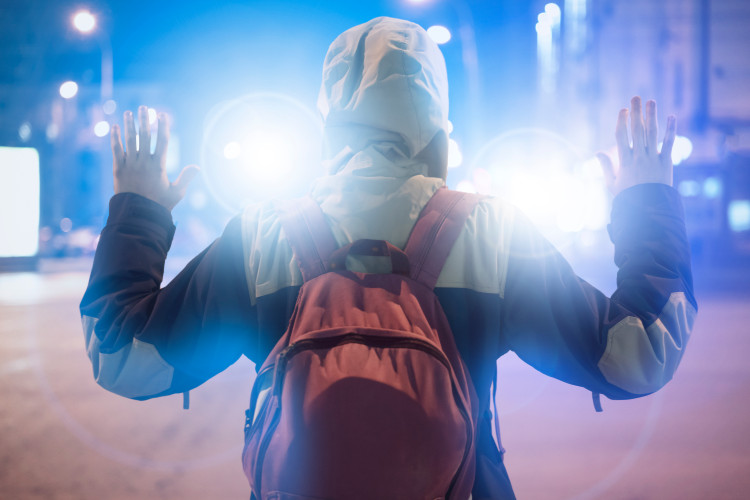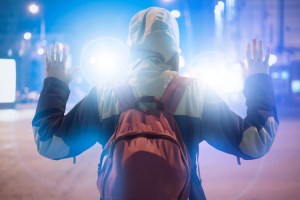Juvenile delinquency statistics, risk factors, and resources for helping American youth

Young people who commit a crime in the U.S. risk entering the largest prison system in the world. Almost 1.5 million people were imprisoned in the U.S. at the end of 2018, according to data released by the Bureau of Justice Statistics (BJS) in 2020. Between 1978 and 2018, the U.S. prison population jumped by more than 375%.
More recently, prison populations in the U.S. have fallen slightly. There have been small declines each year since 2010, including a 1.6% decline from 2017 to 2018, according to the BJS. However, the U.S. still has the largest incarcerated population in the world. It also incarcerates more young people than any other country.

The impact of crime policy
Multiple factors contribute to changes in incarceration rates, including crime rates, but clear links exist between major changes in prison population and specific laws and policies. For example, federal prison populations ballooned in the 1980s during the war on drugs when mandatory minimum sentences increased; they fell significantly after the U.S. Sentencing Commission cut the length of sentences for all drug trafficking offenses by about 25% in 2014.
Laws and policies have similarly impacted the juvenile justice system. The number of youth in confinement in the U.S. dropped by 60% between 2000 and 2017, largely due to reforms in state and federal laws, according to a 2019 report from the Prison Policy Initiative.
A closer look at juvenile delinquency statistics in the U.S. illustrates the link between the juvenile and adult justice systems and the significance of crime policy for American youth.
Juvenile delinquency statistics in the U.S.
Juvenile delinquency is unlawful behavior by a minor. (The statutory age of majority varies from state to state; juveniles are either under the age of 17 or 18.) Juvenile crimes include public order offenses; drug law violations; property offenses, such as burglary and theft; and person offenses, including assault, robbery, rape, and homicide.
According to the Juvenile Court Statistics report by the National Center for Juvenile Justice (NCJJ), the categories of offenses most commonly handled by juvenile courts include:
- Simple assault, which accounted for 20% of cases in 2018, includes the unlawful intentional infliction (or threatened or attempted infliction) of nonserious bodily injury without a deadly or dangerous weapon.
- Drug law violations, which accounted for 14% of cases in 2018, include the unlawful purchase, sale, distribution, cultivation, manufacture, possession, transportation, or use of a controlled or prohibited substance, drug, or drug paraphernalia, as well as an attempt to commit these acts.
- Larceny, which accounted for 13% of cases in 2018, includes the unlawful taking of property (other than a motor vehicle) or attempted taking of property from someone’s possession in stealth — but without force or deceit — with intent to permanently deprive the owner of the property.
- Obstruction of justice, which accounted for 12% of cases in 2018, includes intentional obstruction of court or law enforcement efforts in administering justice, calculated effort to lessen the authority or dignity of the court, failing to obey a lawful court order, escaping from confinement, or violating parole or probation.
- Disorderly conduct, which accounted for 6% of cases in 2018, includes the unlawful interruption of the order, peace, or quiet of a community, including offenses such as disturbing the peace, loitering, vagrancy, riot, and unlawful assembly.
Other leading juvenile offenses include burglary, vandalism, aggravated assault, trespassing, robbery, and weapons offenses.
Juvenile delinquency statistics by state
West Virginia, Wyoming, Oregon, Alaska, and South Dakota have the highest juvenile custody rates, according to The Sentencing Project. The rate is defined as the number of youths in the juvenile justice system per 100,000 youths in the state. Connecticut, Hawaii, Vermont, New Hampshire, and North Carolina have the lowest rates.
State-level juvenile arrest rates (also defined by number per 100,000) vary significantly depending on the type of violation. For example, Nevada, Delaware, and Louisiana have the highest number of arrests for aggravated assault, while Wyoming, South Dakota, and Utah have the highest rates for drug abuse, according to the Office of Juvenile Justice and Delinquency Prevention (OJJDP).
Comparing juvenile arrest and custody rates at the state level can be misleading, however, because the laws governing juvenile crime and detention vary greatly from state to state. Some states are actively working to reduce youth incarceration. Juvenile justice reform legislation in California, for example, has outlawed incarceration of youth for truancy and prohibited youth under the age of 16 from being placed in the adult detention system.
Juvenile detention centers
In the U.S., young people confined as a result of juvenile or criminal justice involvement can be held in a variety of facilities. Youth correctional facilities include detention centers, long-term secure facilities, and short-term reception centers. A substantial number of juveniles are held in adult prisons and jails.
Juvenile justice practitioners typically agree that confining youth is generally not in the best interest of young offenders or the public. Juvenile detention centers are meant to provide safe and temporary custody, but youth correctional centers are large, locked facilities that generally resemble adult prisons. Two-thirds of youth in juvenile facilities are held for longer than a month, according to Prison Policy Initiative.
Incarcerated youth are at risk for physical and psychological abuse, sexual assault, and suicide. Education services are limited. Adverse effects associated with detention include poorer life outcomes, including less success with educational attainment, personal and family relationships, and gainful employment.
10 key juvenile delinquency statistics
- Between 2009 and 2018, the number of cases handled by juvenile courts in the U.S. decreased 48% (NCJJ report).
- Over the same period, cases have declined in every category of offense except criminal homicide and nonviolent sex offenses; both of those rose 3% (NCJJ report).
- Despite positive trends in child arrests, 1,995 children are arrested in the U.S. each day (Children’s Defense Fund).
- More than 728,000 children were arrested in the U.S. in 2018 (OJJDP).
- White youth account for more than 60% of juvenile arrests (OJJDP).
- Male youth account for 70% of juvenile arrests (OJJDP).
- More than 48,000 youth in the U.S. are confined in facilities away from home due to justice involvement (Prison Policy Initiative).
- Approximately 1 in 5 youth held in juvenile facilities are awaiting trial and have not been found guilty or delinquent (Prison Policy Initiative).
- There are more than 1,500 juvenile corrections facilities in the U.S. (OJJDP).
- Private corporations and organizations run 40% of juvenile corrections facilities in the U.S. (OJJDP).
Resources: Juvenile Delinquency Information and Statistics
- BJS: Report covering indicators of school crime and safety in 2018
- Juvenile Law Center: Discussion on how to make the youth homelessness effort bipartisan
- National Criminal Justice Reference Service: Special feature on youth violence including statistics
- The New York Times: Article on high incarceration rates despite a decrease in crime
- OJJDP: Characteristics of juvenile correction facilities
- The Annie E. Casey Foundation: Information on youth residing in juvenile detention facilities in the U.S.
- The Conversation: Discussion on whether young children should be sent to juvenile detention centers
- The Sentencing Project: Trends in the U.S. corrections system
- ThoughtCo.:Discussion on how juvenile incarceration is linked to more crime
- U.S. Department of Justice Office of Justice Programs: Statistics on juvenile justice issues
Juvenile delinquency risk factors and prevention strategies
Risk factors associated with a higher likelihood of juvenile delinquency can be organized into four categories:
- Individual. Examples of individual risk factors include substance abuse, antisocial behavior, cognitive disabilities, hyperactivity, and physical problems.
- Family. Family risk factors include low socioeconomic status, poor parent-child relationships, broken homes, and abusive or neglectful parents. Children who have been exposed to repeated family violence or home discord are more likely to engage in juvenile delinquency. Teen parenthood is also associated with higher levels of juvenile justice system contact.
- Peer. Peer risk factors include weak social ties, antisocial or delinquent peers, and gang membership. Young people who are subjected to bullying or ostracism from peers are more likely to engage in delinquent behavior.
- School and community. Risk factors associated with these groups include poor academic performance and neighborhood disorganization. Communities that are economically impoverished and high-crime neighborhoods are more likely to produce juvenile delinquents.
Prevention strategies
Experts in preventive strategies for addressing juvenile delinquency advocate for evidence-based practices that have been evaluated and shown to be effective in reducing or preventing crime. One example of such practices is early detection programs, which attempt to intervene before delinquent behavior occurs. Examples include preschool programs and home visitation programs involving social workers and other health professionals.
A diverse group of organizations, including government agencies and advocacy groups, have developed programs aimed at reducing juvenile delinquency. Those programs target various issues related to juvenile delinquency:
- Diversion programs (community-based treatment and support)
- Education system reforms
- New laws and sentencing guidelines to keep youth out of the adult system
- Policies to reduce juvenile arrests
- Programs to help youth with substance abuse and behavioral disorders
Resources: Juvenile Delinquency Risk Factors and Prevention Strategies
- ACLU: Article discussing race, discipline, and safety in U.S. schools
- Campaign for Youth Justice: Discussion on alternatives to incarceration for youth certified as adults
- Center on Juvenile and Criminal Justice: Facts on urban crime rates amid justice reform efforts
- Juvenile Justice Information Exchange: Key issues on juvenile justice
- National Institute of Justice: Crime solutions for juveniles
- Social Work Today: Discussion of the role of social work in juvenile justice reform
- The Annie E. Casey Foundation: Strategies to reduce confinement among youth of color
- Youth.gov: Discussion of risk factors and protective factors for juveniles
Advocating for change
Addressing juvenile delinquency and its underlying causes requires effort from professionals involved in social work, social justice, and criminology. The skills and knowledge needed to be successful advocates for change differ depending on the job, but experts across these fields share an understanding of the criminal justice system and of strategies for reducing risk factors associated with juvenile delinquency.
More importantly, they share a desire to improve outcomes and reduce recidivism among juvenile offenders. Family members, friends, and other concerned members of society can also play a role in advocating for change in the juvenile justice system.
Resources: Support and Advocate for Young People
- Campaign for Youth Justice: Resources for family engagement
- Children’s Defense Fund: Advocacy resources for concerned individuals
- Coalition for Juvenile Justice: Information for individuals interested in juvenile justice reform
- Juvenile Law Center: Resources on youth advocacy
- National Mentoring Resource Center: Information on how to become a mentor to reduce delinquent behavior among youth
- The Annie E. Casey Foundation: Resources for learning how to reduce incarceration in your jurisdiction
- Youth.gov: Strategies for prevention and early intervention

